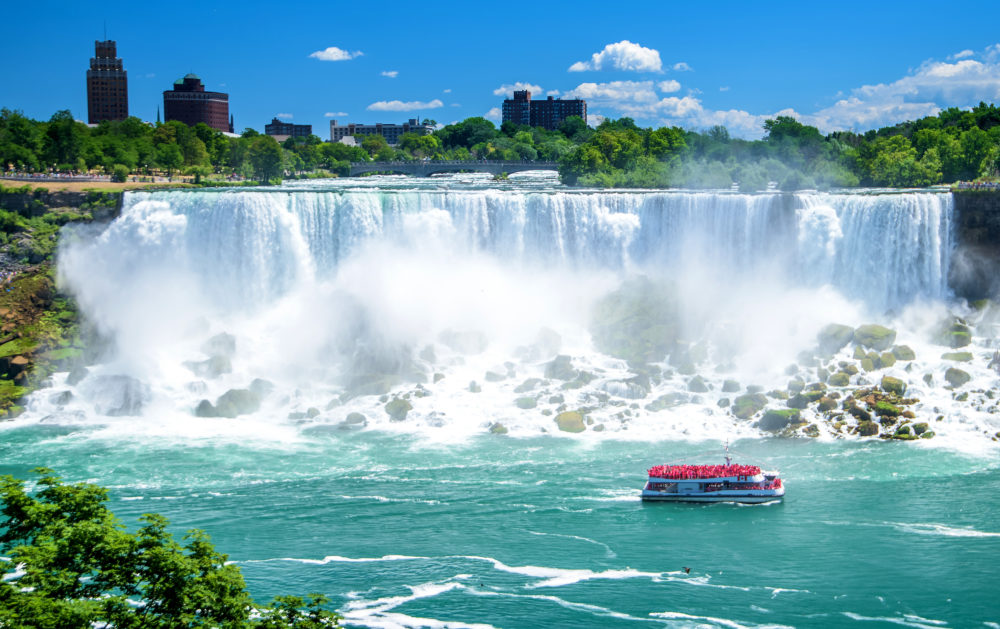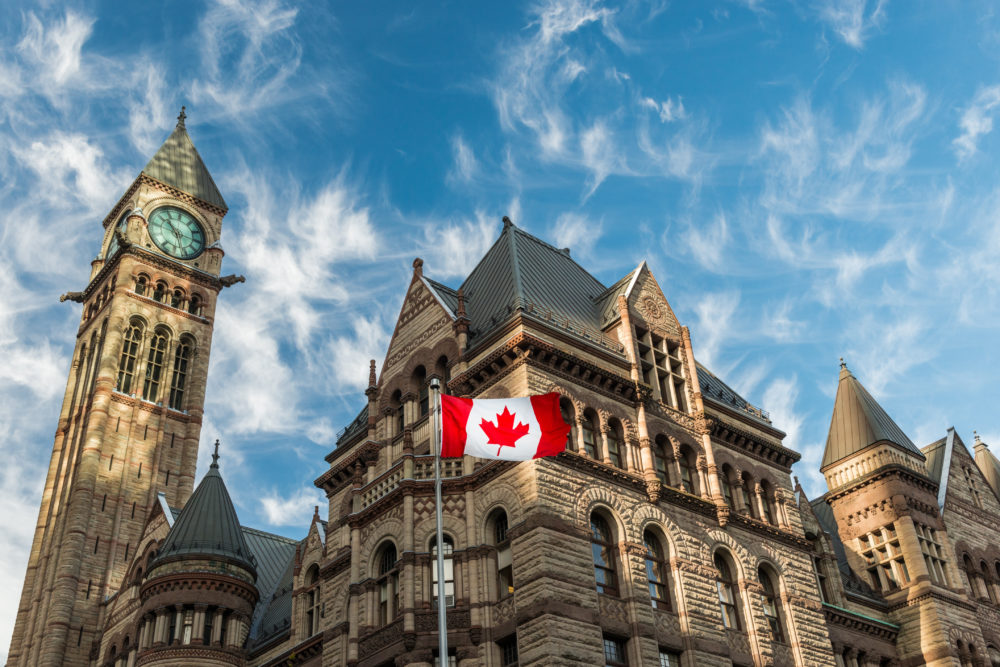
First rule: There are no rules. These resources are completely free and at your disposal. Use as much, or as little, as you want. Study casually, or work to create a portfolio of academic work that will blow the socks off of the educational establishment.
Feel free to adapt the materials for your own purposes. We expect families, business people, backpackers, college students, high school kids, middle aged vacationers, and retirees who are on a late life adventure to take these materials and run with them. We’d be very happy for teachers or travel group leaders to add these materials to their study abroad packets as well.
The nature of open source is collaboration, so please feel free to contribute when you become aware of resources we haven’t listed, or you have project ideas that we haven’t developed. Send us your work and inspire others to reach higher and deeper as they travel!
Our goal with this project is to inspire adventure and further education through experiential learning around the world. Please send us a note and let us know how you used these resources!
Buffet Style Learning
Does the menu look overwhelming? Looking for a formula to use as a skeleton for your studies in Canada?
Choose:
- Two books
- Two films
- Three articles
- One Problem & Solution or Project Option
- One Cultural Assignment
Table of Contents
- Books
- Books for Kids
- Films
- Articles
- Project Options
- Problems & Solutions
- Cultural Assignments
- Create Your Own Coursework
Book Recommendations
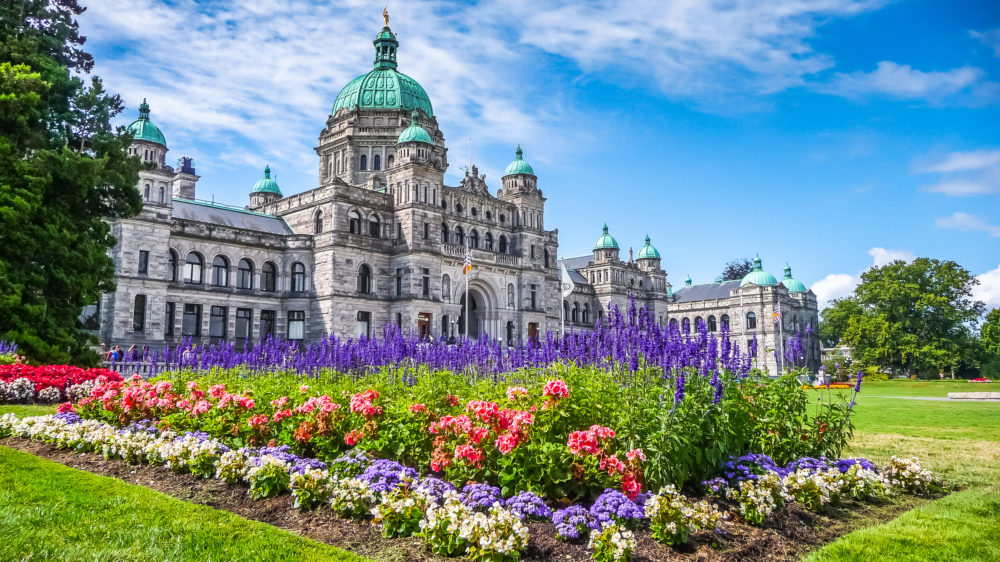
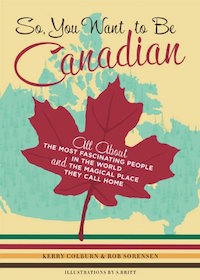 So, You Want to Be Canadian: All About the Most Fascinating People in the World and the Magical Place They Call Home
So, You Want to Be Canadian: All About the Most Fascinating People in the World and the Magical Place They Call Home
by Kerry Colburn & Rob Sorensen
So, you want to be Canadian? Who doesn’t these days? Canucks are enjoying a major renaissance in attention, from their enlightened social policies to their wild and wooly pop culture. This playful, trivia-packed book is a long-overdue celebration of all things Canadian, from the mysteries of “eh?” to the difference between an Ogo Pogo and a Windingo to how to prepare moose stroganoff (mmm!).
Featuring a dreamy list of Canadian hotties, a toe-tapping roundup of Canadian smash hit songs, a handy Canadian-American translator, and pointers on how to eat, dress, and apologize like a Canadian if you weren’t lucky enough to be born a Canuck, So, You Want to Be Canadian demonstrates once and for all why Canada is so cool (formerly just cold).
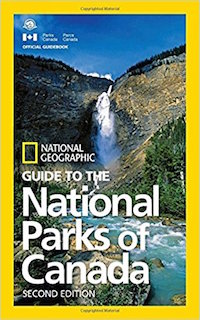 National Geographic Guide to the National Parks of Canada
National Geographic Guide to the National Parks of Canada
by National Geographic
Canada is celebrating it’s 150th anniversary by making all of the National Parks FREE in 2017. Click here to discover how to get a free parks pass.
This completely updated guidebook shows you how to make the most out of your visit to Canada’s 47 gorgeous national parks, just in time for Canada’s 150th birthday—from Cape Breton Highlands to Banff to Pacific Rim National Park Preserve, plus the five newest additions: Nááts’ihch’oh National Park Reserve, Mealy Mountains, Rouge Urban, Qausuittuq, and Sable Island National Park Reserve of Canada. Written by national park experts who know the parks inside out, chock-full of handy, practical information, and beautifully illustrated with stunning photography and one-of-a-kind maps prepared by National Geographic cartographers specifically for this book, this edition takes you step-by-step to the must-sees of each park, and lesser known places as well, making sure you don’t miss a thing.
Detailed guidance highlights the best spots for wildlife watching, favorite places for kayaking, swimming, camping, hiking, and other activities, as well as such nuts-and-bolts information as how to get to each park, the best seasons, where to stay, and much more. This is the only guide you’ll need on your next foray into Canada’s splendid parks.
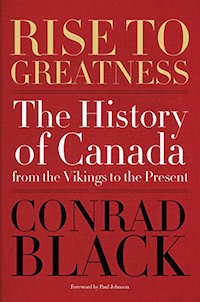 Rise to Greatness: The History of Canada From the Vikings to the Present
Rise to Greatness: The History of Canada From the Vikings to the Present
by Conrad Black
Masterful, ambitious, and groundbreaking, this is a major new history of our country by one of our most respected thinkers and historians — a book every Canadian should own.
From the acclaimed biographer and historian Conrad Black comes the definitive history of Canada — a revealing, groundbreaking account of the people and events that shaped a nation.
Spanning 874 to 2014, and beginning from Canada’s first inhabitants and the early explorers, this masterful history challenges our perception of our history and Canada’s role in the world. From Champlain to Carleton, Baldwin and Lafontaine, to MacDonald, Laurier, and King, Canada’s role in peace and war, to Quebec’s quest for autonomy, Black takes on sweeping themes and vividly recounts the story of Canada’s development from colony to dominion to country.
Black persuasively reveals that while many would argue that Canada was perhaps never predestined for greatness, the opposite is in fact true: the emergence of a magnificent country, against all odds, was a remarkable achievement. Brilliantly conceived, this major new reexamination of our country’s history is a riveting tour de force by one of the best writers writing today.
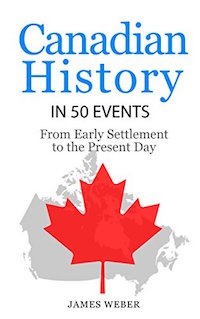 History: Canadian History in 50 Events: From Early Settlement to the Present Day
History: Canadian History in 50 Events: From Early Settlement to the Present Day
by Richard Weber
Do you want to know how Canada became one of the richest nations on Earth?
Read about the 50 most important events in Canadian History, from the first Settlement to the Present Day.
This book will give you a comprehensive overview of the Canadian history. Author James Weber did the research and compiled this huge list of events that changed the course of this nation forever.
Some of them include:
– Prehistoric hunters cross over into North America from Asia (30,000 – 10,000 BC)
– The Inuit people begin to move into what are now the Northwest Territories (2000 BC)
– Leif Ericsson leads Viking expedition to the new World (C.1000 AD)
– Martin Frobisher sails to the Hudson Bay (1576)
– Samuel de Champlain establishes a French colony (1608)
– Treaty of Saint-Germain-en-Laye returns Québec to France (1632)
– Treaty of Utrecht (1713)
– Great Britain founds Halifax (1749)
– The USA invades British colonies (1812-14)
– The provinces of Alberta and Saskatchewan are created (1905)
– World War II (1939-45)
– The St Lawrence Seaway Opens (1959)
– The Québec referendum on sovereignty is narrowly defeated (1995)
– Canada declines to enter the War in Iraq (2003)
and many, many more
The book includes pictures and explanations to every event, making this the perfect resource for students and anyone wanting to broaden their knowledge in history.
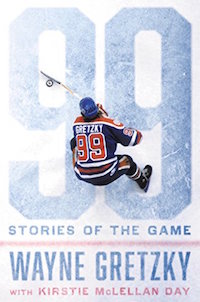 99: Stories of the Game
99: Stories of the Game
by Wayne Gretzky
“The Great One” weaves memories of his legendary career with an inside look at the sport of professional hockey, and the heroes and stories that inspired him.
From minor-hockey phenomenon to Hall of Fame sensation, Wayne Gretzky rewrote the record books, his accomplishments becoming the stuff of legend. Dubbed “The Great One,” he is considered by many to be the greatest hockey player who ever lived. No one has seen more of the game than he has—but he has never discussed in depth just what it was he saw.
For the first time, Gretzky discusses candidly what the game looks like to him and introduces us to the people who inspired and motivated him: mentors, teammates, rivals, the famous and the lesser known. Weaving together lives and moments from an extraordinary career, he reflects on the players who inflamed his imagination when he was a kid, the way he himself figured in the dreams of so many who came after; takes us onto the ice and into the dressing rooms to meet the friends who stood by him and the rivals who spurred him to greater heights; shows us some of the famous moments in hockey history through the eyes of someone who regularly made that history.
Warm, direct, and revelatory, it is a book that gives us number 99, the man and the player, like never before.
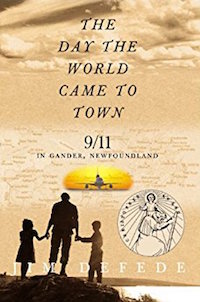 The Day the World Came to Town: 9/11 in Gander, Newfoundland
The Day the World Came to Town: 9/11 in Gander, Newfoundland
by Jim DeFede
“For the better part of a week, nearly every man, woman, and child in Gander and the surrounding smaller towns stopped what they were doing so they could help. They placed their lives on hold for a group of strangers and asked for nothing in return. They affirmed the basic goodness of man at a time when it was easy to doubt such humanity still existed.”
When thirty-eight jetliners bound for the United States were forced to land in Gander, Newfoundland, on September 11, 2001, due to the closing of United States airspace, the citizens of this small community were called upon to come to the aid of more than six thousand displaced travelers.
Roxanne and Clarke Loper were excited to be on their way home from a lengthy and exhausting trip to Kazakhstan, where they had adopted a daughter, when their plane suddenly changed course and they found themselves in Newfoundland. Hannah and Dennis O’Rourke, who had been on vacation in Ireland, were forced to receive updates by telephone on the search for their son Kevin, who was among the firefighters missing at the World Trade Center. George Vitale, a New York state trooper and head of the governor’s security detail in New York City who was returning from a trip to Dublin, struggled to locate his sister Patty, who worked in the Twin Towers. A family of Russian immigrants, on their way to the Seattle area to begin a new life, dealt with the uncertainty of conditions in their future home.
The people of Gander were asked to aid and care for these distraught travelers, as well as for thousands more, and their response was truly extraordinary. Oz Fudge, the town constable, searched all over Gander for a flight-crew member so that he could give her a hug as a favor to her sister, a fellow law enforcement officer who managed to reach him by phone. Eithne Smith, an elementary-school teacher, helped the passengers staying at her school put together letters to family members all over the world, which she then faxed. Bonnie Harris, Vi Tucker, and Linda Humby, members of a local animal protection agency, crawled into the jets’ cargo holds to feed and care for all of the animals on the flights. Hundreds of people put their names on a list to take passengers into their homes and give them a chance to get cleaned up and relax.
The Day the World Came to Town is a positively heartwarming account of the citizens of Gander and its surrounding communities and the unexpected guests who were welcomed with exemplary kindness.
 The Promise of Canada
The Promise of Canada
by Charlotte Gray
“Our country owes its success not to some imagined tribal singularity but to the fact that, although its thirty-five million citizens do not look, speak or pray alike, we have learned to share this land and for the most part live in neighbourly sympathy.” —Charlotte Gray, from the Preface of The Promise of Canada
On the eve of Canada’s sesquicentennial celebrations comes a richly rewarding new book from acclaimed historian Charlotte Gray about what it means to be Canadian. Readers already know Gray as an award-winning biographer, a writer who has brilliantly captured significant individuals and dramatic moments in our history. Now, in The Promise of Canada, she weaves together masterful portraits of nine influential Canadians, creating a unique history of the country over the past 150 years.
 Barskins
Barskins
by Annie Proulx
In the late seventeenth century two penniless young Frenchmen, René Sel and Charles Duquet, arrive in New France. Bound to a feudal lord, a “seigneur,” for three years in exchange for land, they become wood-cutters—barkskins. René suffers extraordinary hardship, oppressed by the forest he is charged with clearing. He is forced to marry a Mi’kmaw woman and their descendants live trapped between two inimical cultures. But Duquet, crafty and ruthless, runs away from the seigneur, becomes a fur trader, then sets up a timber business. Proulx tells the stories of the descendants of Sel and Duquet over three hundred years—their travels across North America, to Europe, China, and New Zealand, under stunningly brutal conditions—the revenge of rivals, accidents, pestilence, Indian attacks, and cultural annihilation. Over and over again, they seize what they can of a presumed infinite resource, leaving the modern-day characters face to face with possible ecological collapse.
Kids Book Recommendations
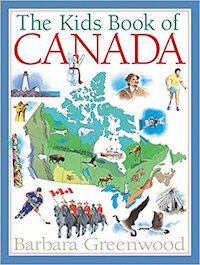 The Kids Book of Canada
The Kids Book of Canada
by Barbara Greenwood
Finally, the premier children’s resource on Canada is available in a fully revised paperback edition — bringing up to date this bestselling treasury of information that has long been an essential book for schools, libraries and homes from coast to coast.
Ten years after its debut, this title in the acclaimed Kids Book of series is more than ever an indispensable tool for researching school projects or a conversation piece for sharing Canadian facts with friends and family. Bursting with rich and detailed illustrations, this book is as far-ranging, fascinating and full of surprises as the country it describes.
Inside you’ll find:
- Colorful maps of the provinces and territories showing major cities, rivers, mountains and points of interest.
- The provincial and territorial coat of arms, flowers, birds and trees.
- Details of famous Canadians and important events, plus a time line to guide you through each province’s and territory’s history.
- Current information on Canada’s growing industries and evolving environmental challenges.
- Updated references to the Aboriginal Peoples in Canada.
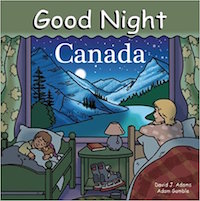 Goodnight Canada
Goodnight Canada
by Adam Gamble & David Adams
Good Night Canada includes the Canadian Rockies, Niagara Falls Stanley Park in Vancouver, icebergs in Newfoundland, streetcars in Toronto, Prince Edward Island, Bay of Fundy, British Columbia Parliament Buildings, Dinosaur Provincial Park, fishing boats, farms, wildlife, hockey, and so much more. This soothing nighttime board book, which features Canada’s most celebrated landmarks and attractions, will have young readers asking for more.
This book is part of the bestselling Good Night Our World series, which includes hundreds of titles exploring iconic locations and exciting, child-friendly themes.
Many of North America’s most beloved regions are artfully celebrated in these board books designed to soothe children before bedtime while instilling an early appreciation for North America’s natural and cultural wonders. Each book stars a multicultural group of people visiting the featured area’s attractions as rhythmic language guides children through the passage of both a single day and the four seasons while saluting the iconic aspects of each place.
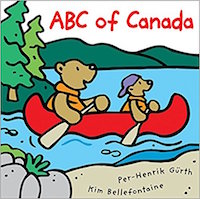 ABC of Canada
ABC of Canada
by Kim Bellefontaine
From Arctic to Zamboni, kids can follow the alphabet on a colorful tour across Canada. On their journey, they’ll visit Canadian landmarks, including Jasper National Park and Peggy’s Cove. They’ll also meet friendly characters enjoying Canadian pastimes, such as riding in the Calgary Stampede, playing hockey and watching the Northern Lights. Vivid illustrations and simple language guarantee that even the youngest traveler will enjoy this trip!
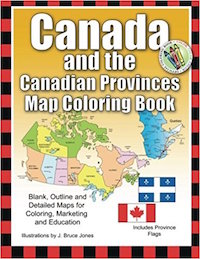 Canada and the Canadian Provinces Map Coloring Book
Canada and the Canadian Provinces Map Coloring Book
by J. Bruce Jones
Learn and color blank, outline maps of the Canada and its Provinces and Territories with Canada and the Canadian Provinces Map Coloring Book. The Canada Map Coloring Book includes blank, outline maps for learning Canadian geography, coloring, home school, education and even making up a map for marketing. Each blank, outline Province is presented with detail maps of political borders, capital, major cities and towns.
Each Provinces or Territory is broken down to 6 maps with their names and other information like highways, rivers and lakes, cites and towns, and capital. Also included is a blank outline map without any information, which is great to color however you want. Along with each Province map is included their flag with some general information, including; Capital, Population, Size, Confederation, Motto, Bird, Flower, Tree, and a Fun Fact. Students can trace the outlines of the map, study and highlight regions and features. A great resource for students and kids.
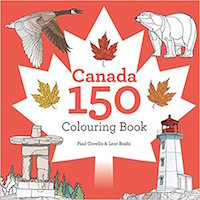 Canada 150
Canada 150
by Paul Kovello & Leor Boshi
Celebrate Canada’s 150th birthday with 150 scenes that celebrate the beauty of our home and native land.
The Kids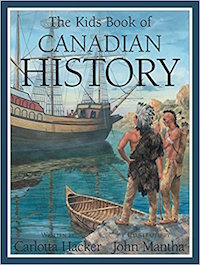 Book of Canadian History
Book of Canadian History
Canada has a rich and fascinating history. In this informative overview, kids will discover the people, places and events that have shaped our country. Featuring fact boxes, mini-profiles, maps, a timeline and more, this title in the acclaimed Kids Book of series offers a comprehensive and engaging look at Canada’s development, change and growth.
Kids can read about
- The potlatch ceremonies of the west coast Aboriginal people
- The building of the Canadian Pacific Railway
- The battle of Vimy Ridge in World War I
- The role of Canadian women in World War II
- The establishment of Nunavut, Canada’s newest territory, and more …
Film Recommendations
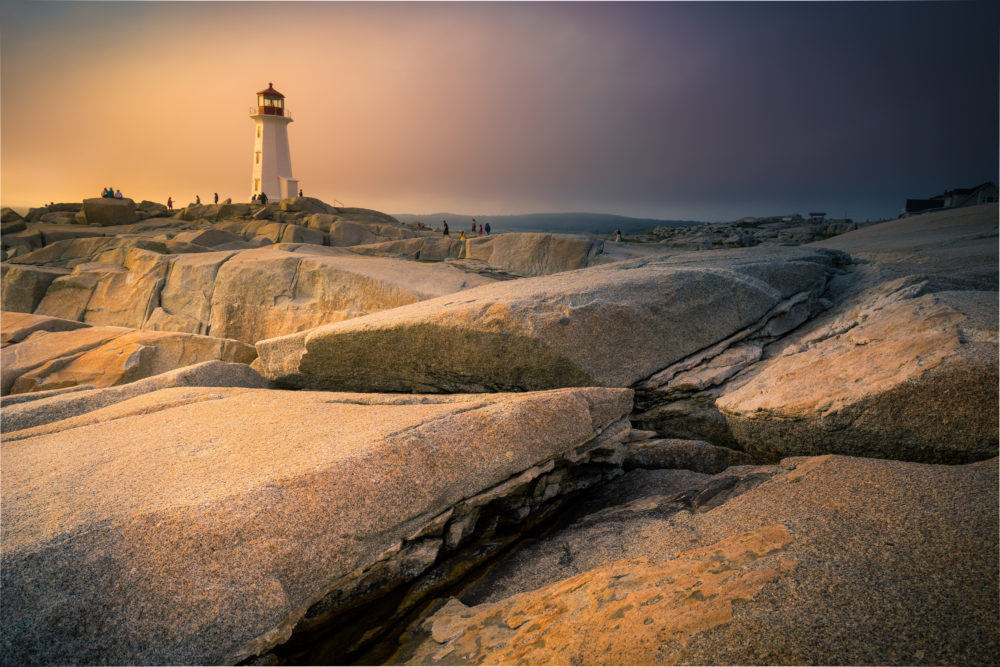
Wild Canada – National Geographic
Scientists have found that black bears are not as effective at catching fish as white bears, as the white bears are less visible from the perspective of the fish. While at night, the two colours of bears have similar success rates at catching fish, such as salmon, during the day, the white bears are 30% more effective.
Inside Canada’s Prisons – CBC Documentary
Salmon Confidential, Documentary About Salmon Farms in Canada & Diseased Salmon
The Real Story Behind the Canadian Flag
Waging Peace: Canada in Afghanistan
Talking Canadian
The Ooze: A Documentary on the Alberta Tar Sands
Amateur documentary-maker Thomas Seal went to find out. Read more here: http://the-ooze.blogspot.co.uk
Worlds Toughest Jobs | Season 1 Episode 6 – Canadian Forestry – Documentary
Article Recommendations

Warren Buffet Invests in Canada… – ny times
Refugees in Canada – ny times
Canada Today on Climate – ny times
North American Indigenous Games – huffington post
Stigma of Surrogacy – huffington post
Deadly Force by Police – huffington post
Feminist Canada – guardian
Child Abuse – guardian
Channel Tunnel – guardian
Dead Whales – guardian
Google Censorship – washington post
Canadian Democracy – washington post
Canada and NAFTA – washington post
Canada’s Identity – washington post
150th Birthday – al jazeera
Refugees Cross to Canada – al jazeera
Mosque Attack – al jazeera
Canada’s “Spies” – al jazeera
Project Options:
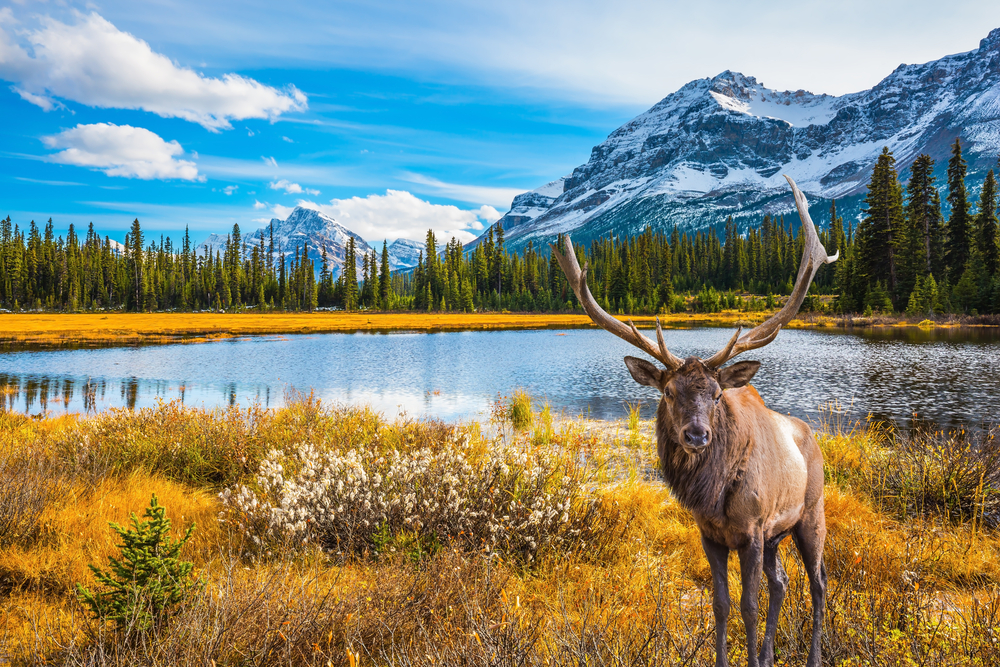
For each of these we will suggest several possibilities within each general heading, and then leave it open for a student to tackle some other interesting subheading that they would like to pursue:
Research and write about an aspect of the history, politics or culture (source books, individual experiences, site visits)
Indigenous Population
There is a very rich history of native Canadians, from communities of Inuit, to the Metis, and the First Nations. How did these groups interact before the colonization of Canada? How are they represented and treated today? There are many locations throughout Canada to visit in person where you can learn firsthand about the culture of these people and the problems that they face today.
Compare and contrast the history of natives in Canada to their native relatives in the United States.
Oil-sand Extraction
In the province of Alberta exist some very large and rich oil sand pits. These pits are currently being mined and the product refined into petrol. The method for mining these oil sand pits has quite a large effect on the surrounding environment and is a source for great controversy. Researching who it is exactly that’s mining and who the opposition is could be very insightful.
Make a project (ie. research paper) regarding the pros and cons of oil sand extraction. What’s at stake if the mining continues? What would it mean for the economy of Canada to prohibit the open pit mining?
Louisbourg Fortress
On the most Eastern coast of Canada lies the city of Louisbourg in the province of Nova Scotia. The original settlers of Louisbourg established themselves in 1713 and managed to grow into a very active port for the French in the 1700s. Eventually walls were erected to surround and protect the entire city. This fortress is still visible today and has been very well maintained. It is actually one of the largest restoration projects in all of North America.
It could be very fun to go and visit this location and create a project related to the history of the fort. It was on the front lines of British invasion and saw its fair share of action. How important was this stronghold for what would soon become the country of Canada? Who is contracted to do the restoration of the fort and are there opportunities to assist in the progress?
Boreal Forests
Canada boasts a very large region of boreal forest. It nearly reaches from coast to coast along the northern regions of the entire country. Boreal forests (also known as Taiga) are located north of the 50th parallel and Canada is home to approximately 1/3 of the entire world’s boreal forest. The forest is made up of mostly coniferous fauna (pines, spruces, larches) and home to many species of animals and insects. There is a ton of awareness and forest conservation that’s going on in Canada right now and lots of opportunity to create a project around it.
What are some of the issues that Canadians are already tackling? How can you help to create a more sustainable biome? If you choose to do a project related to the forests you will have an excess amount of possible hands on fieldwork, considering that about half of Canada is covered in boreal forest.
Art (of all types)
Many great artists from all genres have come from Canada. Some relevant musicians that you may know of are Drake, Justin Bieber and Celine Dion. There are also very well known drawers/painters such as Eric Goldberg and Jack Bush. Whatever your personal taste in art is Canada will not only provide, but also expand your palate. Make a project around Canada’s most influential artists. Study their upbringings, their lives, their pieces of work and try your hand at creation! Who knows, maybe Canada will be your artistic career’s launching point!
Profiles of …..
Conduct a series of at least five interviews within a country. The point of the exercise would be to get a well rounded view of what it is like to live in Canada from a variety of ages, incomes, employments and experiences. This could be conducted as video, or as text. Do an in depth analysis of the experience/information.
People you might profile:
- Farmers
- Teachers
- Restaurant owners/workers
- Clergy or Nuns
- Government officials
- Doctors or nurses
- Cafe owners
- Street vendors
- Children
- Parents
- Drivers
- Artists or musicians
- Laborers
- Cab drivers
- Natives
Problems & Solutions
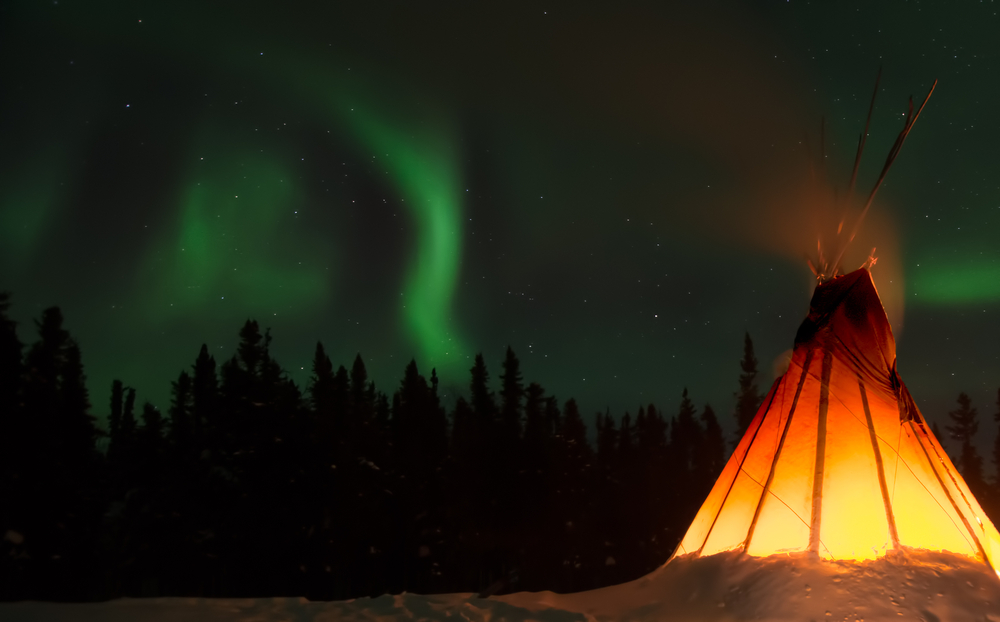
Foreign Policy
A hot topic among Canadian politicians and humanitarian groups right now is a deal that was brokered in 2012 by former Prime Minister Stephen Harper for a 15 billion dollar contract to construct and export an unspecified number of Land Assault Vehicles (LAVs) to Saudi Arabia. There exists a law in Canada that acts to prevent the country from exporting military equipment to countries with known records of human rights violations. The Canadian government has worked around this law and in 2016 approved 6 separate export permits that cover about 70% of the transactions described within the contract with Saudi Arabia.
Why is the Canadian government working around its own laws? Who has the power here and what exactly is the contract being issued for? Does this deal do more good or more harm to the country and its image? Contact a member of the political caucus and hard press them to give a detailed opinion on the matter so that you may see both sides of the coin.
Children in Immigration Detention
After the last census of Canada’s immigration detention centers was completed, an estimated 242 children each year (between 2010-2014) were held within. As of right now there is no limit to how long a child can be held in immigration detention. The conditions of the immigration detention centers are similar to medium-security prisons and offer very little in terms of education access and recreational activities.
Who are the immigrants that are being detained? Why has nothing been done to improve the quality of life for immigrant children within the system? Explore these topics and attempt to offer up a sustainable, equitable and realistic solution to help ease the lives of many children who suffer more than necessary.
Rights of Indigenous People
The indigenous people of Canada are spread far and wide. Many of these people reside in very rural and hard to reach areas. One problem that some of these communities face is the issue of clean drinking water. At least 92 First Nations communities are designated as drinking water advisories and suffer many health problems due to the unsafe water.
If you could develop an effective method for bringing supplies out to these rural and isolated communities there exists the potential to save many indigenous lives. Research where these communities are and what exactly it is that makes it hard for the government to give them assistance.
Indigenous Women’s Rights
While indigenous women make up a very small percentage of the female population in Canada (close to 5%), they account for 16% of female homicide victims in the country. There has not been any concrete studies or evidence that has come out explaining why it is that indigenous women account for such a big chunk of homicides in the country relative to their population percentage. There have been many complaints of the policing done in the indigenous communities, siting that apart from not putting much effort into solving cases, some officers are culpable themselves of abuse against indigenous girls and women.
Try and interview with a native woman to get a more real description of what it’s like to be in her shoes and to see if there is any way in which to stop the violence against these First Nation women.
North Atlantic Right Whales
North Atlantic Right Whales have been recently added to the list of “critically endangered” animals. Just this year 10 carcasses have been washed up onto the beaches in the Gulf of St. Lawrence. A few of the bodies were determined to have been killed by collisions with other sea vessels (such as boats), and a few others due to net entanglement. Not all of these carcasses have been through an autopsy yet so it’s not completely clear as to why so many whales died this year.
It could be very insightful to talk with local fishing companies and hear what they have to say about the whales they encounter as they work. What precautions do they take, if any, to make sure the whales are safe? What is the next step to getting these beautiful creatures off of the endangered list?
Cultural Assignment Options
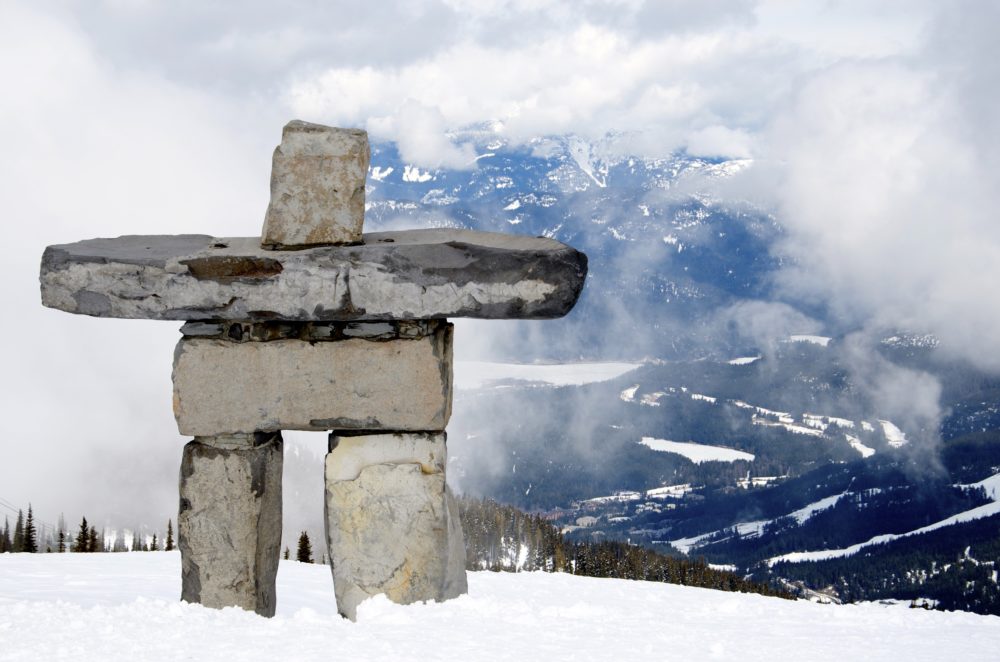
Food
Canada is not one of the countries that leaps to mind when you think of foodie destinations. Most Americans probably think of poutine, maple syrup and bacon when considering food in Canada. Where did that even come from? There is much more to Canada’s cuisine than the stereotypes allow. From the super sweet and chocolatey Nanaimo Bars to the meat filled pies in Quebec, the French-Canadian Tortierre.
If you find yourself hankering for a snack, walk or ride public transportation to the nearest bakery and go all out! You will find an unlimited supply of sweet bread, cakes, and candies. There is truly a meal for every taste bud in Canada which gives any traveler a reason to get out and explore the local eateries!
Make a record (or a video!) of all of the new foods you’re trying as you travel through Canada.
Meaningful Connections
What is a meaningful interaction? You get to decide that. In general, it should be an interaction in which cultural exchange took place and you learned something. Often this will be with a local person; sometimes it will be with another traveler.
Sometimes these interactions look like very little on the outside but are totally life changing on the inside. Other times, they are rock your world amazing from every angle. It could be a meal shared, an afternoon’s excursion, a discussion that opens your eyes in some way, a self revelation that happened without any words exchanged at all.
Spend a day with a local individual or family. Document your experience in photos, interviews and the written word. The best way to interact with locals is to just start chatting with them at markets, on tours or on the street. You can also ask other travelers if they have met anyone who has offered some insight into life in the country. If you are a family who have children attending a local school then have a party, invite a parent to coffee, basically just open up your home to new relationships.
Take a Class
There are many options! Don’t be limited by this list:
- Cooking
- Language
- Art or Crafts
- Literature
- Yoga
- Environmental Sustainability
- Outdoor Survival
Museum Visits
Canada has some fascinating museums, many of them tucked away in tiny places focused on very narrow bands of Canadian history or culture. As you travel, keep your eyes peeled for these and spend some time exploring them.
In my opinion, some of the most interesting include:
- The Royal Ontario Museum
- Montreal Museum of Fine Arts
- Art Gallery of Ontario
- Canadian Museum of History
- Royal BC Museum
- Canadian War Museum
- Royal Tyrrell Museum of Paleontology
- Hockey Hall of Fame
- Canada Science and Technology Museum
- Canadian Museum for Human Rights
- Canadian Museum of Immigration at Pier 21
Save your ticket stubs!
Volunteer
Volunteering is a great way to get to know a local community and give back a bit to the places that you choose to travel. There are lots of ways to do this, both organized and arranged privately, as well as impromptu opportunities that will pop up.
If you’re looking for information regarding volunteer opportunities in Canada, Volunteer Canada has a site dedicated to giving you just that. Please be advised that TAP is not recommending any specific organization, only presenting a list of possibilities. Vet your volunteer options carefully.
Live local
Get out of the hostel, rent a place in a local village, or do a homestay. Through websites like Airbnb it’s easy to find places to live locally. Consider a co-living space to develop community with like minded travelers while diving a little deeper and going a little bit more local.
Photo essay or a blog description of why living local was different than living in a hostel. How did this experience change the economics of your stay? What did you learn about the way locals live? What challenged you? What would you do differently next time?
Work Stay
Through an organization like WWOOF, HelpX, or Workaway you can arrange for an opportunity to work in exchange for your room and board in a number of capacities, from farm labour to hospitality. Lots of students make use of these experiences to lower the cost of their travels, while at the same time learning valuable skills or “trying out” various career areas that interest them.
Request feedback in the form of a short evaluation that can be used later for a CV or reference
Public Transportation Project
Take as many types of public transportation as possible.
Challenge yourself to take every type of public transportation available while you are in Canada. Create a photo essay or videologue of your adventures. What did you learn?
Attend a Religious Observance
Canada is an open society with different types of religious practice. The majority of religious views in Canada fall under Christianity with most of the adherents being Catholics. Roughly 67% of the population follow Christian ideals while close to 24% of the population takes an agnostic approach by having “no religion”. Take some time to attend various religious observances and see what you can learn. Don’t be afraid to ask questions. How does the religious climate in Canada compare with what you grew up with?
How to Create Your Own Course Work
Ask
Learn to ask for what you want. If you meet someone interesting, ask them to teach you. Ask them for an interview. Ask to shadow them for a day or a week. You’ll be surprised at how eager people are to share what they know and teach when someone shows actual interest. Learn to ask questions. Learn to take social risks by putting yourself out there as a learner.
Plan
You have an idea or an interest. Something surprises you on your journey and all of a sudden you have a burning desire to know more. Plan your attack:
- Narrow your field of study to a particular question or topic.
- Compile resources: Look for teachers. Who knows what you need to know? Or who can you interview to learn more? Are there books or videos on the topic you’re interested in?
- Quantify it. How will you demonstrate what you have learned? A research paper, a video project, a photo essay, through art or music, a blog post, a published piece, an interview series, a mini documentary or do you have some other idea?
Produce
Produce a quality piece of academic work that reflects your experiential learning. The whole key to quantifying outside the box learning is to translate it into something that reflects the value of what you learned and how it contributed to your overall educational process.
Perhaps this will be as simple as a traditional research paper, depending on the depth and length of your study this could be as short as three pages or as long as a dissertation. Maybe you’ll produce a video for YouTube, or something grander, like a mini-documentary. Perhaps you’ll do something concrete instead, an art, or community action project and you’ll tell the story through a photo essay, or a series of blog posts. The possibilities are limited only by the resources you have at hand. Get creative. Think outside the box and truly experience your education.
Do You Have Anything to Add to This Resource Page?
We’re actively seeking to grow these resources in an open-source spirit. Please email jenn(at)bootsnall(dot)com with your edits or submissions of new information or materials.
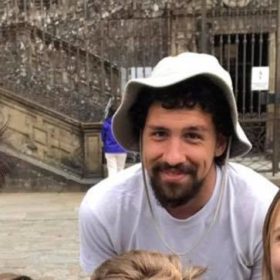
At age 16 I had my first travel abroad experience, my junior year of high school spent in San Juan, Argentina. It was one of the most awakening experiences that I have ever had and opened the door to many new perspectives and future opportunities. Since then I have been pursuing each avenue of interest in an attempt to discover my true passion, dare I say my purpose? I am currently writing for the Travel Access Project as part of my internship with the program. I obtained the internship in part due to my school, the Wayfinding Academy. It’s a brand new non-profit and I am lucky enough to be a student in the first cohort ever! My name is Derek Schroeder and I will be your blog wizard.

